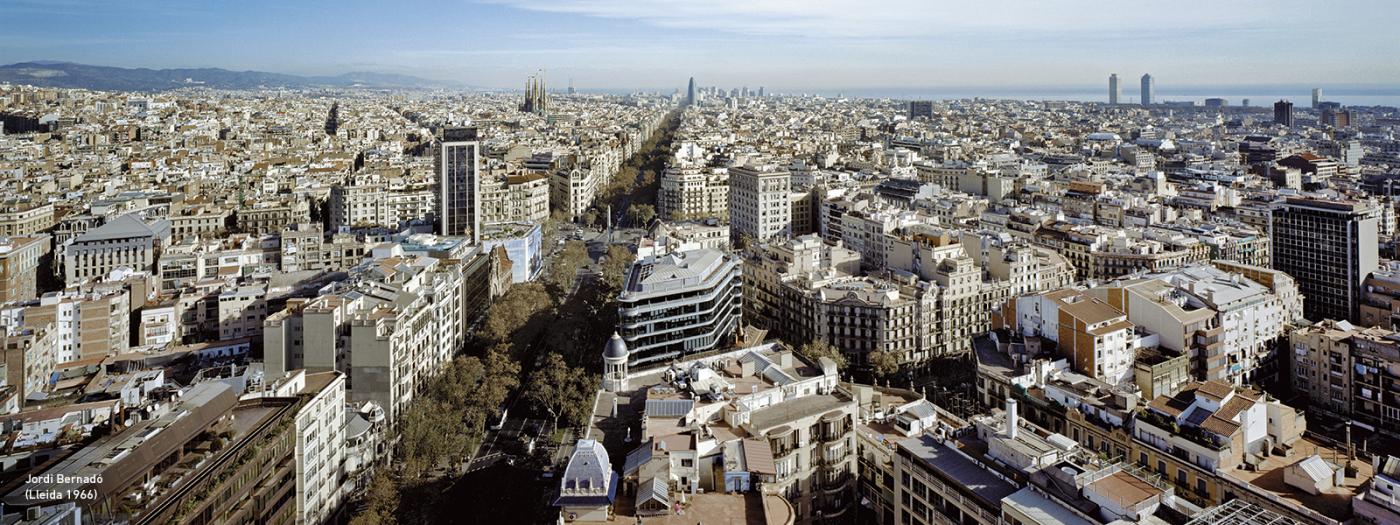Hold a Bachelor in Architecture or in Building Engineering.
Contemporary knowledge-based societies place a lot of importance on research. The main objective of the course is to learn to define the interest of a particular research project in clear terms and to outline a solid methodological approach in order to ensure its viability. The students' own Master's Thesis dissertations will be used as case studies for developing a research methodology.
The course is organized in three large theoretical blocks.
The first block is dedicated to examining basic methodological guidelines for professional and academic research in architecture, urbanism and landscape through lectures where professors and guest speakers will present their methods for undertaking research based on their own experiences.
The second block is dedicated to providing students with specific working tools, including academic writing, citation formats, notes, bibliographical references and forms of representation.
The third and final block is dedicated to introducing students to publishing, providing basic guidelines for writing journal articles as a first step toward disseminating their research results. The practical part of the course will consist in each student developing their own work from PA005 in order to end up with a workable structure for the Master research project (Dissertation).
The course combines theoretical and practical sessions. Most three-hour long sessions will be divided into halves: the first one will be devoted to theory and the second one to practice. The basic theoretical sessions are combined with a showcase of case studies. The case studies will be presented through a series of lectures from guest researches to describe their working methodologies and their research experience.
During the practical work sessions, students will apply the knowledge they have acquired to their own Master Research Project (MRP), using the results of PA005 as a starting point. The application of this knowledge must be approached from a critical standpoint, based on the premise that each research project is different and thus requires its own roadmap.
Over the length of the course each student will have to apply the theoretical guidelines and the examples provided by the case studies in order to define the structure of their MRP. The format of the fully developed MRP will be that of a Dissertation, and it will be due by the end of the MIAD.
The evaluation is ongoing, including one-on-one critiques of each student's projects as well as presentations, both individually and in groups. In addition to periodic presentations, students must deliver, by the end of the course, a document developing the basic structure of their Master Research Project dissertation.
Evaluation will be based on deliverables (MRP structure), attendance and class participation.
The evaluation system is as follows:
- Individual or group work: 40%
- Public presentation of works: 40%
- Class participation: 20%
-Borden, Iain and Katerina Rüedi Ray. The Dissertation: A Guide for Architecture Students. London : Routledge, 2014.
-Eco, Umberto. Cómo se hace una tesis. Técnicas y procedimientos de estudio, investigación y escritura. Barcelona: Gedisa, 2001.
-Foqué, Richard. Building Knowledge in Architecture. Antwerp: University Press Antwerp, 2010.
-Gastón, Cristina and Teresa Rovira. El proyecto moderno. Pautas de investigación. Barcelona: Ediciones UPC, 2007.
-Groat, Linda and David Wang . Architectural Research Methods. New Jersey : John Wiley & Sons, 2002.
-Hacker, Diana and Nancy Sommers. The Bedford Handbook. Boston: Bedford/St. Martin's, 2009. -Laurel, Brenda. Design Research: Methods and Perspectives. Cambridge: MIT Press, 2003.
- Modern Language Association. MLA Style Manual and Guide to Scholarly Publishing. New York : Modern Language Association, 2008.
- Jarzombek, Mark. "A Thesis." Thresholds 12 (1996): 6-8
- Kieran, Stephen. "Research in Design: Planning Doing Monitoring Learning." Journal of Architectural Education (2007): 27-31.
- Leatherbarrow, David ."Architecture is its Own Discipline." The Discipline of Architecture. Andrzej Piotrowski and Julia Williams Robinson, eds. Minneapolis: University of Minnesota Press, 2001: 83- 102.
- Linder, Mark. "TRANSdisciplinarity." Hunch 9 (2005): 12-15.
